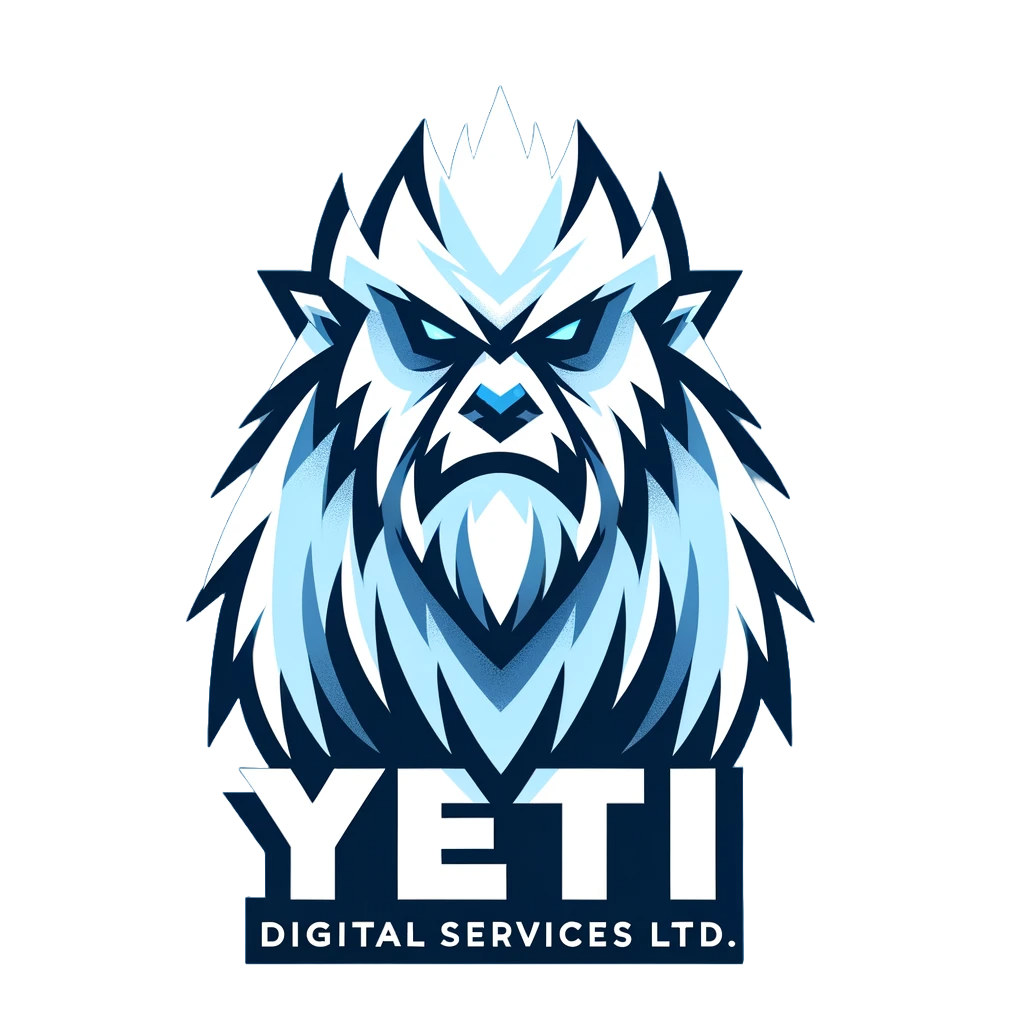In today’s fast-paced business world, providing excellent customer service is crucial for success. However, the demands of handling numerous customer inquiries can overwhelm your team, leading to burnout and missed opportunities. Reducing your customer service workload is possible and essential to maintain both customer satisfaction and your team’s well-being. Yeti Digital Services Ltd specializes in helping businesses like yours achieve this balance. This article will explore several innovative techniques to reduce customer service workload while ensuring customers remain happy and engaged.
Table of Contents
ToggleUnderstanding Customer Service Workload
What is Customer Service Workload?
Customer service workload refers to the daily work your customer service team handles. This includes answering phone calls, responding to emails, managing live chats, and handling social media inquiries. When the workload becomes too heavy, it can negatively impact your team’s efficiency and the quality of service your customers receive.
Why is a High Workload a Problem?
When your customer service workload is too high, several issues can arise. First, your team may struggle to keep up with the volume of inquiries, leading to longer response times and frustrated customers. Second, the quality of service may decline as your team rushes to handle each interaction. Finally, an overwhelmed team can lead to employee burnout, which increases turnover and disrupts your business operations.
The Hidden Costs of High Workload
 Beyond the obvious problems of burnout and declining service quality, a high customer service workload can lead to hidden costs. These include the financial burden of hiring additional staff to manage the workload, the loss of potential sales due to unsatisfied customers, and the reputational damage from consistently poor service. Addressing these hidden costs is essential for maintaining a healthy business.
Beyond the obvious problems of burnout and declining service quality, a high customer service workload can lead to hidden costs. These include the financial burden of hiring additional staff to manage the workload, the loss of potential sales due to unsatisfied customers, and the reputational damage from consistently poor service. Addressing these hidden costs is essential for maintaining a healthy business.
The Impact on Customer Loyalty
Customers today have more choices than ever, and their loyalty can quickly wane if they consistently encounter slow or unhelpful service. A high customer service workload often results in less personalized attention, making customers feel undervalued. This, in turn, can lead to a decline in repeat business and negatively impact your brand’s reputation.
Innovative Techniques to Reduce Customer Service Workload
Reducing customer service workload doesn’t mean lowering your standards—it means working smarter, not harder. Here are some innovative techniques to help you achieve this.
1. Automation of Repetitive Tasks
Why Automation Matters
Automation is one of the most effective ways to reduce customer service workload. By automating repetitive tasks, such as answering common questions or processing simple requests, you can free up your team to focus on more complex and personalized customer interactions.
How It Works
Automation tools, like chatbots, can handle a wide range of customer service tasks. For example, Yeti Digital Services Ltd offers AI-powered chatbots that automatically respond to frequently asked questions, track orders, and schedule appointments. These chatbots can work 24/7, providing instant responses to customers and reducing the workload on your human agents.
Expanding the Scope of Automation
While automating simple tasks is an obvious first step, the scope of automation can extend far beyond basic inquiries. Advanced AI-driven chatbots can now handle more complex customer service interactions, such as processing returns, offering product recommendations based on previous purchases, or even guiding customers through troubleshooting processes. The ability to manage these tasks without human intervention significantly reduces the workload and enhances the customer experience.
Real-World Example
Imagine your business receives hundreds of inquiries about order status every day. By implementing a chatbot that instantly provides this information, you can drastically reduce the number of calls or emails your team needs to handle. This lightens the load and improves customer satisfaction by providing quick answers. In addition, the workload reduction can be even more significant if the chatbot can handle related tasks—such as modifying delivery addresses or providing updates on delayed shipments.
2. Self-Service Solutions
Empower Your Customers
Self-service options allow customers to find answers and solve problems independently without contacting your support team. This reduces the number of inquiries your team needs to handle and gives customers more control over their experience.
Examples of Self-Service Tools
 Standard self-service tools include knowledge bases, FAQ sections, and video tutorials. A well-organized knowledge base can guide customers through troubleshooting steps or provide detailed information about your products or services. Yeti Digital Services Ltd can help you set up and optimize these self-service resources to ensure they are easy for customers to navigate.
Standard self-service tools include knowledge bases, FAQ sections, and video tutorials. A well-organized knowledge base can guide customers through troubleshooting steps or provide detailed information about your products or services. Yeti Digital Services Ltd can help you set up and optimize these self-service resources to ensure they are easy for customers to navigate.
Expanding Self-Service Offerings
In addition to the standard self-service tools, consider offering interactive tools such as online forums where customers can help each other or decision trees that guide users through a series of steps to resolve their issues. These expanded self-service offerings reduce the burden on your customer service team and create a community-driven approach to problem-solving that can enhance customer loyalty.
Tips for Effective Self-Service
- Keep It Simple: Ensure your self-service tools are easy to understand and use.
- Update Regularly: Keep your content current to address new questions or issues.
- Promote Visibility: Make your self-service options easy to find on your website or app.
- Leverage Analytics: Use analytics to track which self-service resources are most frequently accessed and identify gaps in your offerings. This data can help you continually improve your self-service tools.
Case Study Example
Consider a software company implementing a detailed knowledge base with step-by-step guides and video tutorials. After launching this resource, the company saw a 30% reduction in customer service inquiries, as customers could find answers independently. Additionally, customer satisfaction scores improved as users appreciated the ability to solve their issues without waiting for support.
3. Streamlining Communication Channels
Why Less is More
Managing multiple communication channels—such as phone, email, live chat, and social media—can be overwhelming. Streamlining these channels can help reduce customer service workload by allowing your team to focus on fewer, more effective platforms.
Choosing the Right Channels
The key is to choose the communication channels that work best for your customers and your team. For example, if most of your customers prefer live chat, it may make sense to prioritize this channel over others. Yeti Digital Services Ltd offers tools that integrate multiple communication channels into a single platform, making managing customer interactions easier for your team.
Consolidating Communication Channels
Another way to reduce customer service workload is by consolidating communication channels. For instance, consider integrating these channels into a unified system instead of managing separate teams for phone support, email support, and social media. This allows customer service representatives to handle multiple inquiries from a single interface, improving efficiency and reducing the potential for miscommunication.
Benefits of Streamlining
- Improved Efficiency: Your team can handle inquiries more quickly and effectively.
- Consistent Service: Customers receive the same high level of service across all channels.
- Reduced Confusion: Fewer channels mean less chance of miscommunication or missed messages.
- Enhanced Reporting: A unified communication platform can provide better reporting and analytics, allowing you to track customer service performance across all channels.
The Role of Omnichannel Support
 Omnichannel support, where customers can seamlessly switch between channels without losing context, is becoming increasingly important. Implementing an omnichannel strategy can reduce customer service workload by ensuring all interactions are captured in one place, regardless of the channel. This approach allows your team to provide more consistent and efficient service.
Omnichannel support, where customers can seamlessly switch between channels without losing context, is becoming increasingly important. Implementing an omnichannel strategy can reduce customer service workload by ensuring all interactions are captured in one place, regardless of the channel. This approach allows your team to provide more consistent and efficient service.
4. Training and Empowering Customer Service Teams
The Power of Knowledge
A well-trained team is better equipped to handle customer inquiries efficiently, which helps reduce customer service workload. Investing in training empowers your team to resolve issues quickly and confidently.
Ongoing Training
Customer service is constantly evolving, so it’s important to provide ongoing training to your team. This includes training on new tools, like the automation and self-service options mentioned earlier, and soft skills like communication and empathy.
Advanced Training Techniques
In addition to traditional training methods, consider incorporating more advanced techniques such as role-playing scenarios, where employees can practice handling difficult customer interactions in a controlled environment. This training can build confidence and improve problem-solving skills, reducing the time and effort required to resolve customer issues.
Knowledge Sharing
Encourage a culture of knowledge sharing within your team. When team members share tips and best practices with each other, they can handle customer inquiries more effectively. Yeti Digital Services Ltd can assist with creating training programs tailored to your business needs.
Mentorship Programs
Another effective strategy is implementing mentorship programs where experienced customer service representatives mentor newer team members. This approach helps new hires get up to speed more quickly and fosters a collaborative environment where knowledge and skills are continually developed.
Leveraging Technology for Training
Consider using technology to enhance your training programs. Online training platforms can provide interactive modules, quizzes, and tracking tools to ensure your team members continuously improve their skills. Yeti Digital Services Ltd can help you implement these platforms, ensuring your training programs are effective and scalable.
The Role of AI and Chatbots in Reducing Workload
How AI-Powered Chatbots Work
AI-powered chatbots are an advanced form of automation that can significantly reduce customer service workload. These chatbots use artificial intelligence to understand and respond to customer inquiries in a natural, conversational manner. They can handle various tasks, from answering basic questions to assisting with complex issues.
Capabilities of AI Chatbots
Unlike simple, rule-based bots, AI chatbots can learn from interactions and improve over time. They use natural language processing (NLP) to understand customer queries and provide accurate, relevant responses. This makes them an invaluable tool for reducing customer service workload, as they can handle many tasks that would otherwise require a human agent.
Advanced Features of AI Chatbots
Modern AI chatbots are equipped with advanced features like sentiment analysis, which allows them to gauge the emotional tone of customer inquiries and respond accordingly. This capability helps manage more sensitive or urgent customer interactions without needing immediate human intervention. Additionally, AI chatbots can integrate with customer relationship management (CRM) systems, providing personalized responses based on the customer’s history with your company.
Yeti Digital Services Ltd’s Chatbot Solutions
Yeti Digital Services Ltd offers customizable AI chatbot solutions tailored to your business’s needs. Whether you need a chatbot to handle common customer inquiries or assist with more complex tasks, their solutions can help reduce your customer service workload while maintaining high-quality service.
Case Studies and Examples
For example, a retail business implemented an AI chatbot to handle customer inquiries about product availability, order status, and returns. Within a few weeks, the business saw a significant reduction in customer service workload, as the chatbot could handle these common inquiries independently. This allowed the human agents to focus on more complex issues, improving overall customer satisfaction.
Another case involved a healthcare provider implementing an AI chatbot to manage appointment scheduling and patient inquiries. The chatbot was integrated with the provider’s existing CRM, allowing it to offer personalized responses and reminders to patients. As a result, the provider saw a 40% reduction in phone call volume, freeing up staff to focus on in-depth patient care.
Future of AI in Customer Service
The future of AI in customer service is promising, with ongoing advancements in machine learning and natural language processing. These technologies will continue to enhance chatbots’ capabilities, making them even more effective in reducing customer service workload. As AI becomes more sophisticated, businesses that adopt these tools early will be well-positioned to offer superior customer service while maintaining manageable workloads.
Common Challenges and How to Overcome Them
Identifying Common Challenges
 Reducing customer service workloads can present challenges. Some businesses may resist change, while others might be concerned about the initial costs of implementing new tools and technologies.
Reducing customer service workloads can present challenges. Some businesses may resist change, while others might be concerned about the initial costs of implementing new tools and technologies.
Overcoming Resistance to Automation
One common challenge is resistance to automation, both from employees and customers. Employees might worry about job security, while customers may prefer human interaction. To overcome this, it’s important to communicate the benefits of automation, such as faster response times and the ability for human agents to focus on more complex issues. Yeti Digital Services Ltd can help you navigate these challenges by offering support and guidance throughout the implementation process.
Managing Implementation Costs
Another challenge is the initial investment required to implement automation and self-service tools. However, it’s important to consider these costs as an investment in the long-term efficiency of your customer service operations. The savings from reduced workload, improved efficiency, and enhanced customer satisfaction can quickly offset these initial costs. Yeti Digital Services Ltd offers scalable solutions that can fit various budgets, ensuring that even small businesses can benefit from these technologies.
Ensuring a Smooth Transition
A smooth transition to automated systems is crucial for minimizing disruption and ensuring that your team and customers adapt comfortably. Start by gradually introducing automation into less critical areas of your customer service operations and slowly expand as your team and customers become more accustomed to the new tools. Regularly solicit employee and customer feedback to identify issues early and adjust as needed.
Building Customer Trust
Customers may be initially hesitant to interact with automated systems. Building trust is key to overcoming this resistance. Ensure that your chatbot and self-service tools are well-designed, easy to use, and capable of handling a wide range of inquiries. Providing clear explanations of how these tools work and highlighting their benefits, such as faster service, can help encourage customers to embrace them.
Q&A Section
Question 1: What are the first steps a business should take to reduce customer service workload?
Answer: Start by identifying the most time-consuming tasks that your customer service team handles regularly. Once you’ve identified these tasks, consider implementing automation for these specific areas. Yeti Digital Services Ltd can assist with an initial assessment of your customer service operations and offer recommendations on the best tools and techniques to reduce your workload.
Question 2: How can a small business afford the tools needed to reduce customer service workload?
Answer: Investing in tools that reduce customer service workload can lead to long-term savings. By improving efficiency and reducing the need for additional staffing, these tools can pay for themselves over time. Yeti Digital Services Ltd offers affordable solutions that are scalable to fit the needs and budgets of small businesses.
Question 3: Will reducing customer service workload affect the quality of customer interactions?
Answer: No, when done correctly, reducing customer service workload through automation and self-service options can enhance the quality of customer interactions. By freeing up your human agents to focus on more complex and personalized inquiries, you can improve customer satisfaction and provide a better overall experience.
Question 4: How quickly can results be seen after implementing these techniques?
Answer: The timeframe for seeing results can vary depending on the techniques used, but many businesses see improvements within a few weeks of implementing automation and self-service options. These tools can quickly reduce customer service workload, leading to faster response times and higher customer satisfaction.
Question 5: What role does employee training play in reducing customer service workload?
Answer: Employee training is critical in reducing customer service workload. A well-trained team can handle inquiries more efficiently, reducing the time and effort required to resolve customer issues. Ongoing training, especially on new tools and technologies, ensures that your team remains effective as your customer service operations evolve.
Question 6: Can AI chatbots handle complex customer service inquiries?
Answer: Modern AI chatbots can handle complex inquiries thanks to advancements in machine learning and natural language processing. While they may not replace human agents for highly sensitive or nuanced issues, they can effectively manage a wide range of complex tasks, significantly reducing the workload on your human team.
Conclusion
Reducing customer service workload is not only possible but essential for maintaining high customer satisfaction and keeping your team motivated. Implementing innovative techniques like automation, self-service solutions, and AI-powered chatbots can streamline your operations and provide better customer service.
 Reducing customer service workload should be a strategic priority for any business looking to maintain high levels of customer satisfaction while ensuring operational efficiency. The techniques discussed in this article—automation, self-service solutions, streamlining communication channels, and ongoing training—provide a comprehensive approach to achieving this goal. By leveraging these tools, businesses can reduce the strain on their customer service teams, improve response times, and deliver more personalized customer experiences.
Reducing customer service workload should be a strategic priority for any business looking to maintain high levels of customer satisfaction while ensuring operational efficiency. The techniques discussed in this article—automation, self-service solutions, streamlining communication channels, and ongoing training—provide a comprehensive approach to achieving this goal. By leveraging these tools, businesses can reduce the strain on their customer service teams, improve response times, and deliver more personalized customer experiences.
Moreover, the integration of AI-powered chatbots and advanced automation tools can significantly enhance the effectiveness of your customer service operations. These technologies are not just about cutting costs but about delivering better service at scale. As customers increasingly demand quick and accurate responses, meeting these expectations without overburdening your team becomes a crucial competitive advantage.
Finally, it’s important to remember that reducing customer service workload is an ongoing process. Regularly assessing your operations, staying updated with the latest technologies, and continuously training your team is essential for maintaining efficiency and ensuring that your customer service remains top-notch. Yeti Digital Services Ltd is here to support you every step of the way, offering tailored solutions that fit your specific business needs.
Get your Chatbot Today
Ready to reduce your customer service workload and take your business to the next level? Contact Yeti Digital Services Ltd today for a consultation. Our team of experts can help you implement customized solutions that will improve efficiency, enhance customer satisfaction, and give your team the tools they need to succeed. Whether you’re looking to automate repetitive tasks, set up self-service solutions, or integrate advanced AI chatbots, we have the expertise to help you achieve your goals. Visit our website or schedule your free consultation now to get started on the path to a more efficient and effective customer service operation.





